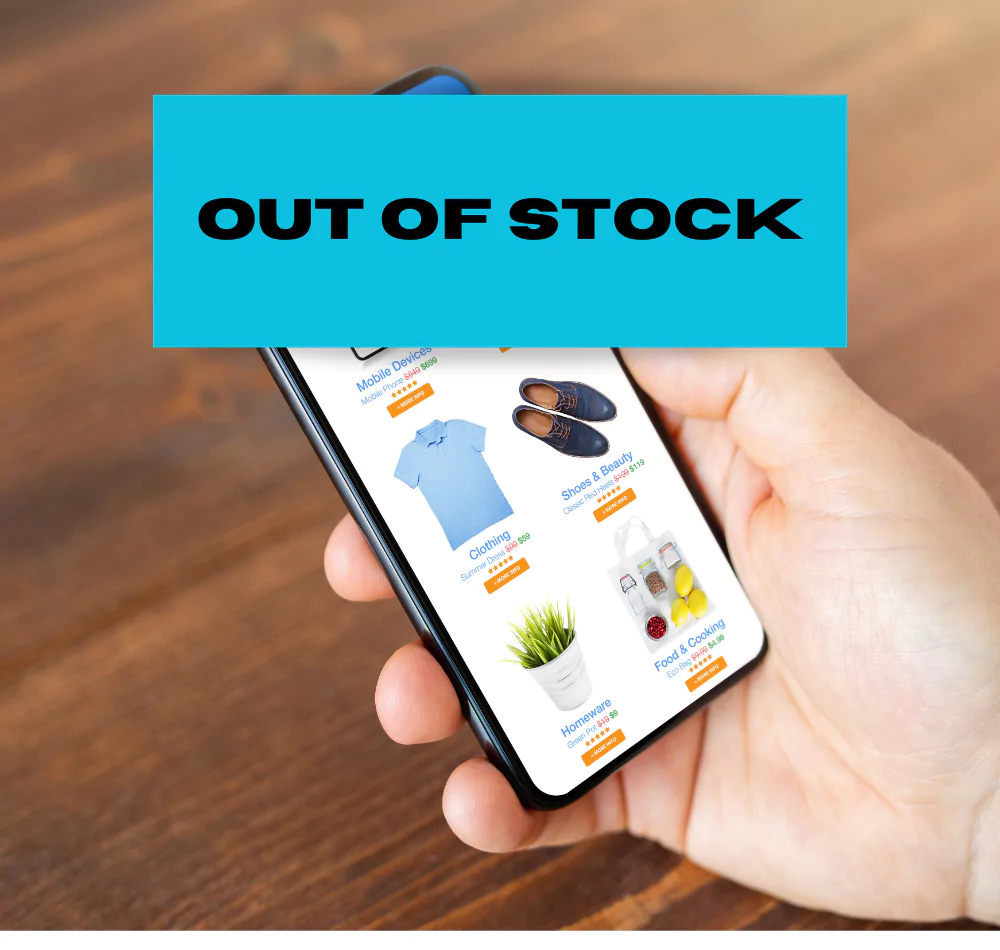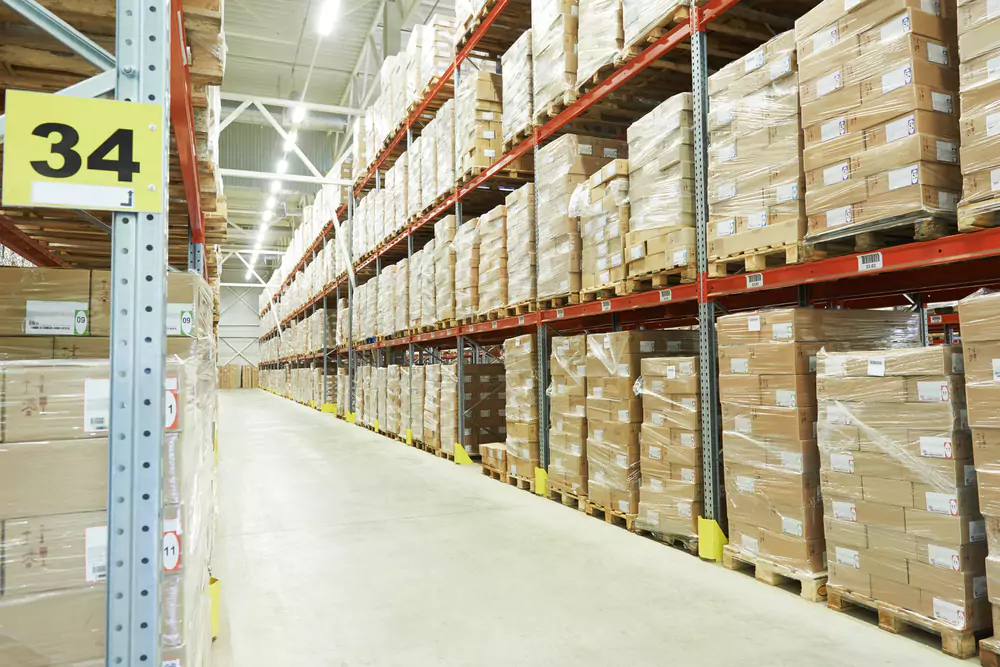Stockouts, or out-of-stocks, are a common challenge faced by warehouse and supply chain professionals. This comprehensive guide will provide you with an in-depth understanding of a stock out, what causes stockouts, and their impact on businesses. We will also explore ways to reduce or prevent out-of-stocks, and how our warehouse management software, SphereWMS, can help optimize inventory management. This article aims to offer an extensive resource for warehouse management and supply chain professionals to tackle stockouts head-on.
Unraveling Stockouts: The Basics
A stock out occurs when a warehouse is unable to fulfill an order due to insufficient inventory. This situation is undesirable for both the business and its customers, leading to a chain of negative consequences. Understanding the fundamentals of stockouts is the first step towards addressing and mitigating their impact on operations.
Types of Stockouts
Stockouts can be classified into two categories:
- Complete Stockouts: This occurs when there is no stock available for a specific item, and the warehouse is unable to fulfill any orders for that item.
- Partial Stockouts: This happens when there is some stock available, but not enough to fulfill the entire order. As a result, the warehouse can only partially satisfy the customer’s demand.
Duration of Stockouts
Stockouts can also be categorized by their duration:
- Short-term Stockouts: These are temporary shortages, usually resulting from sudden demand surges or short-lived supply chain disruptions. They are often resolved quickly, minimizing the overall impact on the business.
- Long-term Stockouts: These are prolonged shortages that persist for an extended period, often due to systemic issues such as chronic supply chain problems or inadequate inventory management practices. A long-term stock shortage can have a more severe impact on a company’s operations and reputation.
Delving Deeper: Common Causes of Stockouts
To effectively manage a stock out, it’s essential to identify their root causes. This section will discuss common reasons for a stock out, including:
Inaccurate Inventory Data Records
Inventory records that don’t accurately reflect the actual stock levels can lead to a stock out. Common reasons for inaccurate records include:
- Human error in manual data entry.
- Misplacement or loss of items within the warehouse.
- Theft or shrinkage.
- Inadequate tracking systems.
Erroneous Demand Forecasting
Inaccurate demand forecasts can lead to a stock out by causing businesses to underestimate the required inventory levels. Factors contributing to poor demand forecasting include:
- Lack of historical sales data.
- Inability to account for seasonality or market trends.
- Reliance on intuition instead of data-driven insights.
- Ignoring external factors such as competitor actions, economic conditions, and regulatory changes.
Manufacturing Disruptions
Disruptions in manufacturing can result in a stock out if they delay or halt production, leading to insufficient inventory. Common causes of manufacturing disruptions include:
- Equipment breakdowns or malfunctions.
- Labor strikes or shortages.
- Quality control issues.
- Raw material shortages or price fluctuations.
Supplier Delays
A stock out can occur when suppliers fail to deliver goods on time, leaving businesses with insufficient inventory to meet demand. Common reasons for supplier delays include:
- Production issues at the supplier’s facility.
- Transportation or logistics problems.
- Poor communication between suppliers and businesses.
- Inadequate supplier performance monitoring and management.
Logistical Challenges
Logistical problems, such as transportation delays, customs clearance issues, or warehouse inefficiencies, can lead to a stock out by preventing timely inventory replenishment. Factors contributing to logistical challenges include:
- Inadequate transportation infrastructure.
- Unreliable shipping providers.
- Insufficient warehouse staffing or training.
- Inefficient warehouse layout or design.
- Unexpected events, such as natural disasters or geopolitical disruptions.
The Domino Effect: How Stockouts Impact Businesses
Stockouts can lead to a multitude of negative consequences for businesses. In this section, we’ll examine the direct and indirect effects of a stock shortage on a company’s bottom line, including:
Negative Customer Reviews and Damaged Brand Reputation
Stockouts can lead to customer frustration and dissatisfaction, resulting in negative reviews and a tarnished brand reputation. In the age of social media and online store reviews, even a single out-of-stock incident can have far-reaching consequences and drive potential customers away.
Increased Refund Costs and Processing Time
When out-of-stocks occur, businesses may need to issue refunds or offer compensation to affected customers. This not only increases costs but also requires additional staff time to handle customer complaints and process refunds.
Loss of Sales and Revenue
Stockouts directly impact a company’s revenue by preventing sales of out-of-stock items. Furthermore, customers who experience a stock shortage may choose to purchase from competitors instead, leading to lost sales and a loss of market share.
Customer Attrition and Loss of Potential Repeat Business
Customers who experience products being out of stock may become frustrated and decide not to return to the business in the future. This loss of customer loyalty can result in less customer retention, a decrease in repeat business, and potential long-term revenue loss.
Back-Order Costs and Operational Inefficiencies
When inventory goes out of stock, businesses may need to place items on backorder, causing additional costs and inefficiencies. Back-ordered items require extra resources for tracking and fulfillment, and may also lead to increased shipping costs if multiple shipments are needed to fulfill a single order.
The Silver Lining: When Stockouts May Be Beneficial
While stockouts are generally viewed as negative events, there are instances when they might indicate a positive trend. In this section, we’ll discuss scenarios where out-of-stocks can be seen as a sign of high consumer demand and how businesses can capitalize on these opportunities.
Gauging Product Popularity
Stockouts can provide valuable insights into product popularity and help businesses identify best-selling items. By monitoring out-of-stock occurrences, businesses can adjust their inventory management strategies to prioritize high-demand products and ensure adequate stock levels.
Creating a Sense of Urgency
In some cases, stockouts at retail businesses can create a sense of urgency among customers, driving them to purchase items before they run out of stock. This “scarcity effect” can lead to increased sales, particularly for limited edition or exclusive products. However, businesses should be cautious not to rely on this strategy, as frequent out-of-stocks may ultimately harm customer satisfaction and brand reputation.
The Road to Stockout Prevention: Strategies for Reducing and Managing Stockouts
Effectively preventing stockouts requires a combination of strategies, including improving inventory accuracy, monitoring your supply chain, and addressing poor cash flow management. Here are five key ways to reduce or avoid stockouts, along with an explanation of how our warehouse management software, SphereWMS, can support these efforts:
Enhancing Inventory Accuracy
Regular audits, efficient tracking systems, and the use of barcode scanners can improve inventory accuracy and help avoid stockouts. By maintaining accurate inventory records, businesses can ensure that they have the necessary stock levels to meet customer demand.
Improving Demand Forecasting
Using data-driven insights and advanced algorithms, businesses can see inventory trends and improve their demand forecasting accuracy. This allows them to anticipate fluctuations in demand and adjust inventory levels accordingly.
Monitoring and Strengthening the Supply Chain
Timely deliveries and minimal disruptions are crucial to preventing stockouts. Businesses should closely monitor their global supply chain, establish strong relationships with suppliers, and have contingency plans in place for potential disruptions.
Calculating and Maintaining an Appropriate Level of Safety Stock
Determining how much inventory to keep on hand is essential for preventing stockouts while avoiding excess stock. One way to strike a balance is by calculating and maintaining an appropriate level of safety stock. Safety stock is an additional quantity of inventory held to account for variability in demand and lead time. By calculating and maintaining an appropriate level of safety stock, businesses can reduce the risk of an out-of-stock.
A practical formula to determine how much inventory to keep as safety stock is: Safety Stock = (Maximum Lead Time x Maximum Daily Usage) – (Average Lead Time x Average Demand)
Keeping Track of Inventory Replenishment Time
Monitoring inventory replenishment time is essential for preventing stockouts. By tracking stock replenishment lead times and supplier performance, businesses can identify potential issues and take corrective action before an out-of-stock occurs.
Leveraging SphereWMS Warehouse and Inventory Management Software
In this section, we’ll showcase how our warehouse management software, SphereWMS, can help your business prevent stockouts and optimize inventory management. We will discuss the key features and benefits of SphereWMS, including:
Real-Time Inventory Tracking and Visibility
SphereWMS provides real-time inventory tracking and visibility, including stock alerts, allowing businesses to monitor stock levels and make informed decisions about inventory management. This helps prevent stockouts by ensuring that businesses have accurate, up-to-date information about their inventory.
Advanced Demand Forecasting Tools
Our software offers advanced demand forecasting tools that use historical sales data, seasonality, and market trends to predict future demand. By leveraging these tools, businesses can make more accurate inventory decisions and reduce the risk of an out-of-stock.
Efficient Order Processing and Fulfillment Capabilities
SphereWMS streamlines order processing and fulfillment, reducing the likelihood of stockouts due to warehouse inefficiencies. Our software automates various tasks in fulfillment centers, such as picking, packing, and shipping, ensuring that orders are fulfilled quickly and accurately.
Detailed Reporting and Analytics for Data-Driven Decision-Making
With SphereWMS, businesses have access to detailed reporting and analytics features that provide valuable insights into their inventory and supply chain performance. By analyzing this data, businesses can identify areas for improvement, optimize their inventory management strategies, track inventory, and prevent stockouts.
Seamless Integration with Existing Systems and Platforms
SphereWMS can be seamlessly integrated with a variety of existing systems and platforms, such as ERP, e-commerce, and shipping solutions. This integration enables businesses to centralize their inventory management, reduce manual data entry, and minimize the risk of stockouts due to human error or inaccurate information.
Collaborative Inventory Management for 3PLs and Their Clients
3PL providers can work closely with their third-party logistics clients to optimize inventory management and minimize stockouts. This collaboration can involve sharing data, implementing best practices, and leveraging technology to improve visibility and control over inventory. In this section, we’ll discuss key strategies for collaborative inventory management between 3PLs and their clients:
Establishing Clear Communication Channels
Effective communication is crucial for successful collaboration between 3PLs and their clients. Regular meetings, progress reports, and shared KPIs can help both parties stay aligned and address potential issues before they escalate.
Sharing Data and Forecasting Insights
By sharing past sales data, demand forecasts, and inventory information, 3PLs and their clients can work together to make more informed decisions about inventory management. This collaboration can lead to more accurate demand forecasts, better inventory planning, and reduced risk of an out-of-stock.
Implementing Technology Solutions for Proper Inventory Management
3PLs can leverage warehouse management software, such as SphereWMS, to provide their clients with real-time inventory visibility and advanced analytics. By offering these technology solutions, 3PLs can help their clients optimize inventory management and reduce stockouts.
Conclusion
Stockouts are an ongoing challenge for warehouse and supply chain professionals. By understanding the causes and consequences of stockouts, businesses can implement effective strategies to reduce their likelihood and impact. With the help of SphereWMS, your company can optimize its inventory management system, minimize stock shortages, and ultimately, boost customer satisfaction and profitability. By following the strategies and insights presented in this comprehensive guide, you’ll be well-equipped to tackle stockouts and maintain a successful warehouse operation.
FAQs
How Can I Measure the Frequency and Severity of Stockouts in My Warehouse?
To measure the frequency and severity of stockouts, consider tracking key performance indicators (KPIs) such as stockout rate and out-of-stock duration. Stockout rate is calculated as the number of stockout incidents divided by the total number of orders, while stockout duration measures the average length of time an item is out of stock. By monitoring these KPIs, you can identify patterns in out-of-stock costs and counts, assess the effectiveness of your inventory management strategies, and take corrective action as needed.
What Role Does Demand Variability Play in Causing Stockouts?
Demand variability refers to fluctuations in customer demand for a product. High demand variability increases the risk of stockouts, as it makes it more challenging to accurately forecast demand and maintain appropriate inventory levels. To address demand variability and avoid an out-of-stock, businesses should closely monitor sales data, identify factors that contribute to fluctuations, and adjust their inventory management strategies accordingly.
How Can Just-in-Time (JIT) Inventory Management Help Prevent Stockouts?
Just-in-time (JIT) inventory management is a strategy that aims to minimize inventory levels by ordering and receiving goods only when they are needed. By closely aligning inventory levels with actual demand, JIT can help prevent stockouts and reduce carrying costs. However, JIT requires accurate demand forecasting, reliable suppliers, full inventory counts and efficient order processing to be effective.
How Can Vendor-Managed Inventory (VMI) Help Reduce Stockouts?
Vendor-managed inventory (VMI) is a collaborative arrangement in which suppliers take responsibility for managing and replenishing a business’s inventory. By leveraging the supplier’s expertise and resources to purchase inventory, VMI can help reduce stockouts, improve inventory turnover, and streamline the supply chain. However, successful VMI implementation requires strong communication, trust, and data sharing between the business and its suppliers.
What is the Role of Inventory Classification in Preventing Stockouts?
Inventory classification involves categorizing items based on factors such as demand, value, or lead time. One common method is the ABC analysis, which classifies items into three categories: high-value (A), moderate-value (B), and low-value (C). By prioritizing high-value items and maintaining higher safety stock levels for these items, businesses can reduce the risk of stockouts and optimize their inventory management.
Can Stockouts be Completely Eliminated?
While it may be challenging to completely eliminate stockouts, businesses can significantly reduce their occurrence and impact by implementing effective inventory control and management strategies, leveraging technology, and continuously monitoring and refining their processes. It’s essential to strike a balance between maintaining sufficient inventory levels to prevent products from becoming out of stock and avoiding excess stock that increases carrying costs.
How Do Stockouts Differ from Overstocks, and What Are the Consequences of Overstocking?
Overstocks occur when a business holds more inventory than needed to meet customer demand. While stockouts result from insufficient inventory, overstocks of too much inventory can lead to increased carrying costs, wasted warehouse space, and potential obsolescence. Effective management of inventory aims to find the optimal balance of enough inventory by avoiding an out-of-stock and preventing overstocks to maximize profitability and customer satisfaction.
How Can 3PLs Ensure Inventory Accuracy When Managing Multiple Clients’ Inventory?
3PLs can ensure inventory accuracy by implementing efficient tracking systems, conducting regular audits, and providing ongoing training for their staff. Barcode scanning technology, real-time inventory data updates, and warehouse management software, such as SphereWMS, can also help 3PLs maintain accurate inventory records across multiple clients.
How Can 3PLs Effectively Manage Stockouts When They Have Limited Control Over Their Clients’ Supply Chains?
While 3PLs may have limited control over their clients’ supply chains, they can still play a critical role in managing out-of-stocks by providing timely and accurate inventory information, offering data-driven insights for demand forecasting, and maintaining open communication with their clients. By working collaboratively with clients and sharing best practices, 3PLs can help clients make better inventory decisions and reduce the risk of a stock out.
What Types of Businesses Can Be Affected By Stock Shortages?
Stock shortages can affect businesses of all types. Whether you operate an eCommerce business, distribution center, or other business, you may experience stock outages. Online retailers are particularly vulnerable to stock shortages as they rely heavily on having accurate inventory data in order to fulfill customer orders quickly and efficiently. Meanwhile, distribution centers must monitor their inventory levels closely, as a lack of stock can cause significant delays in shipments and lead to customer dissatisfaction. Other businesses, such as restaurants and retail stores, are also prone to a lack of stock due to the time-sensitive nature of their store inventory. Any business that performs stock counts should invest in inventory software and a system that can provide real-time data updates to prevent stock shortages.









